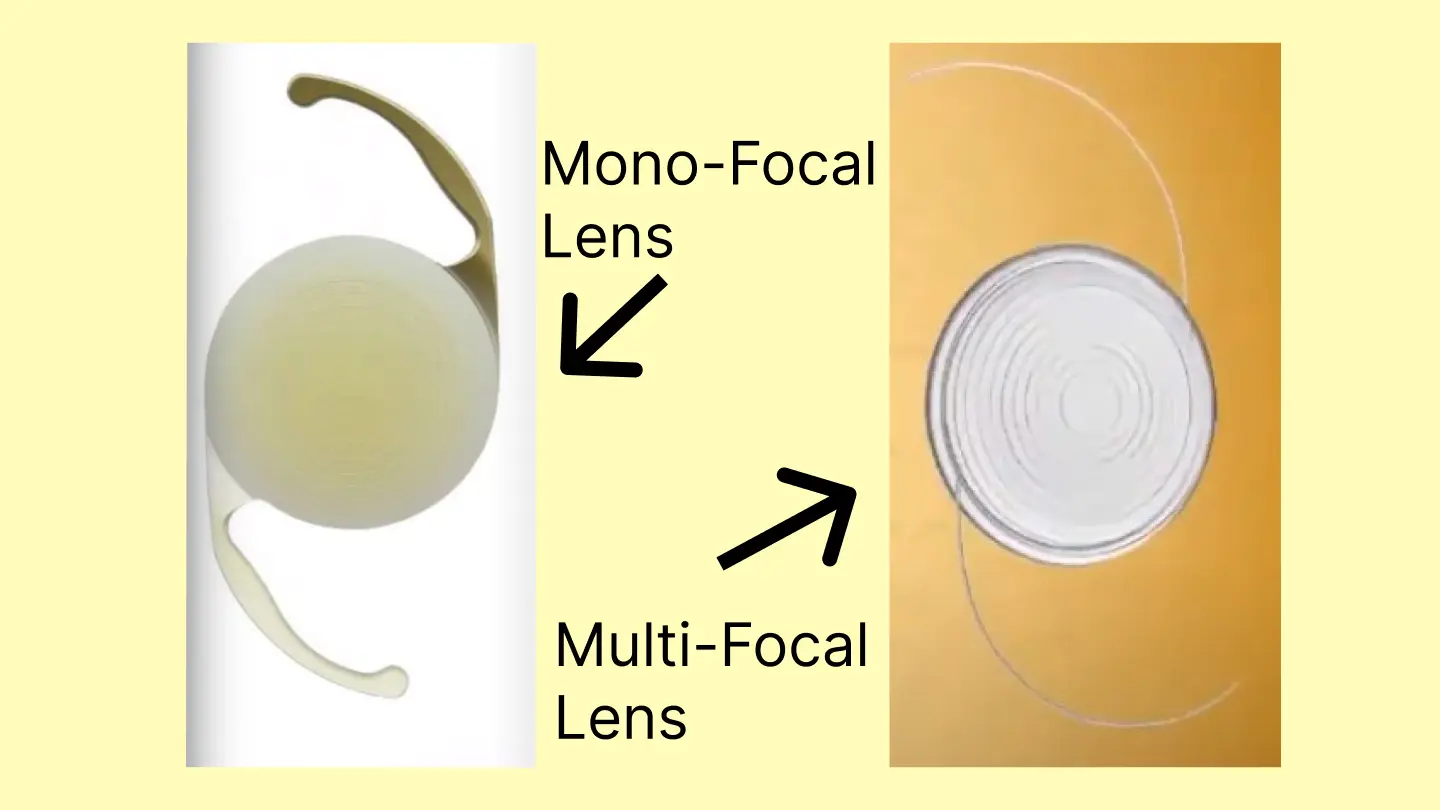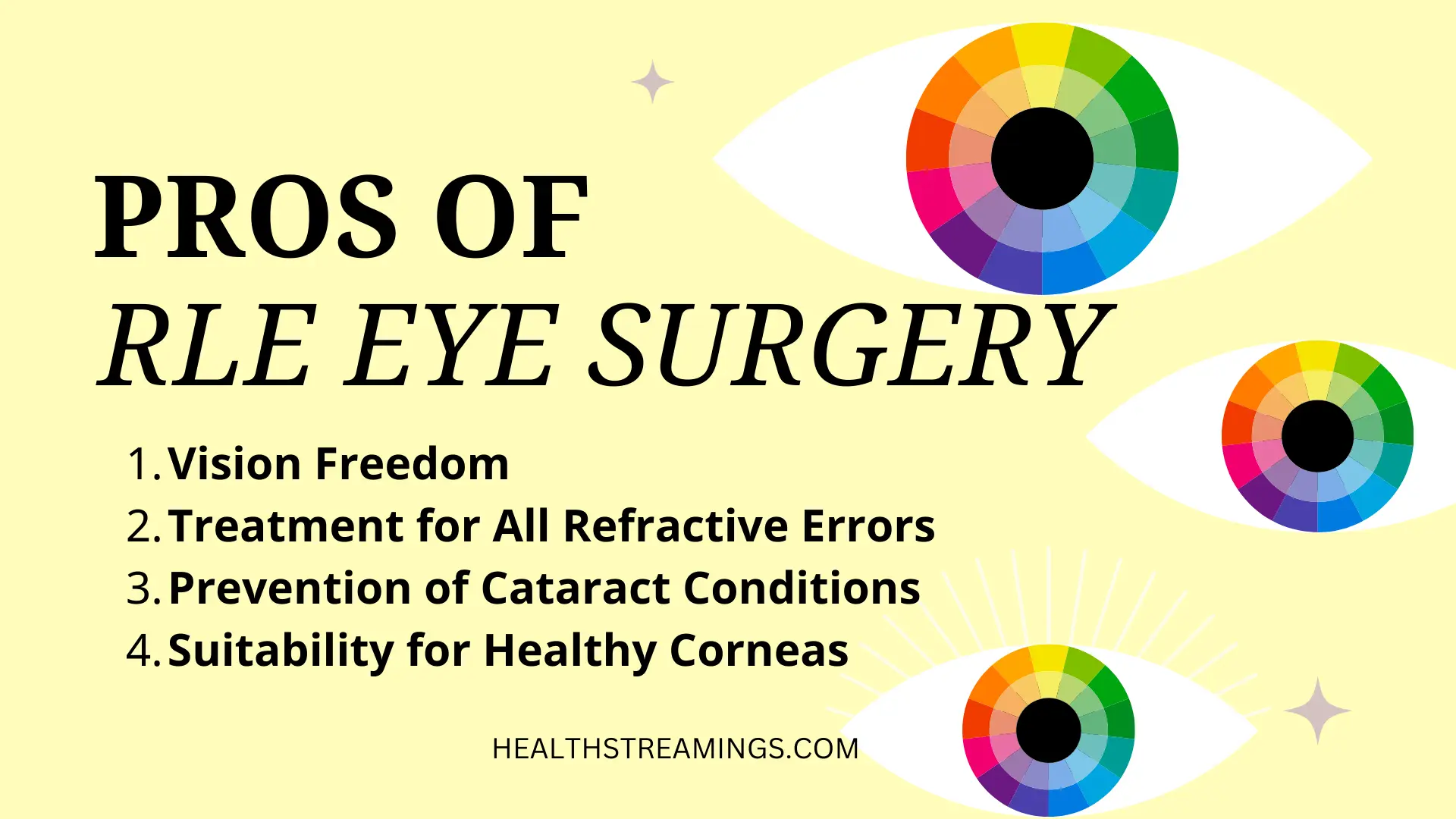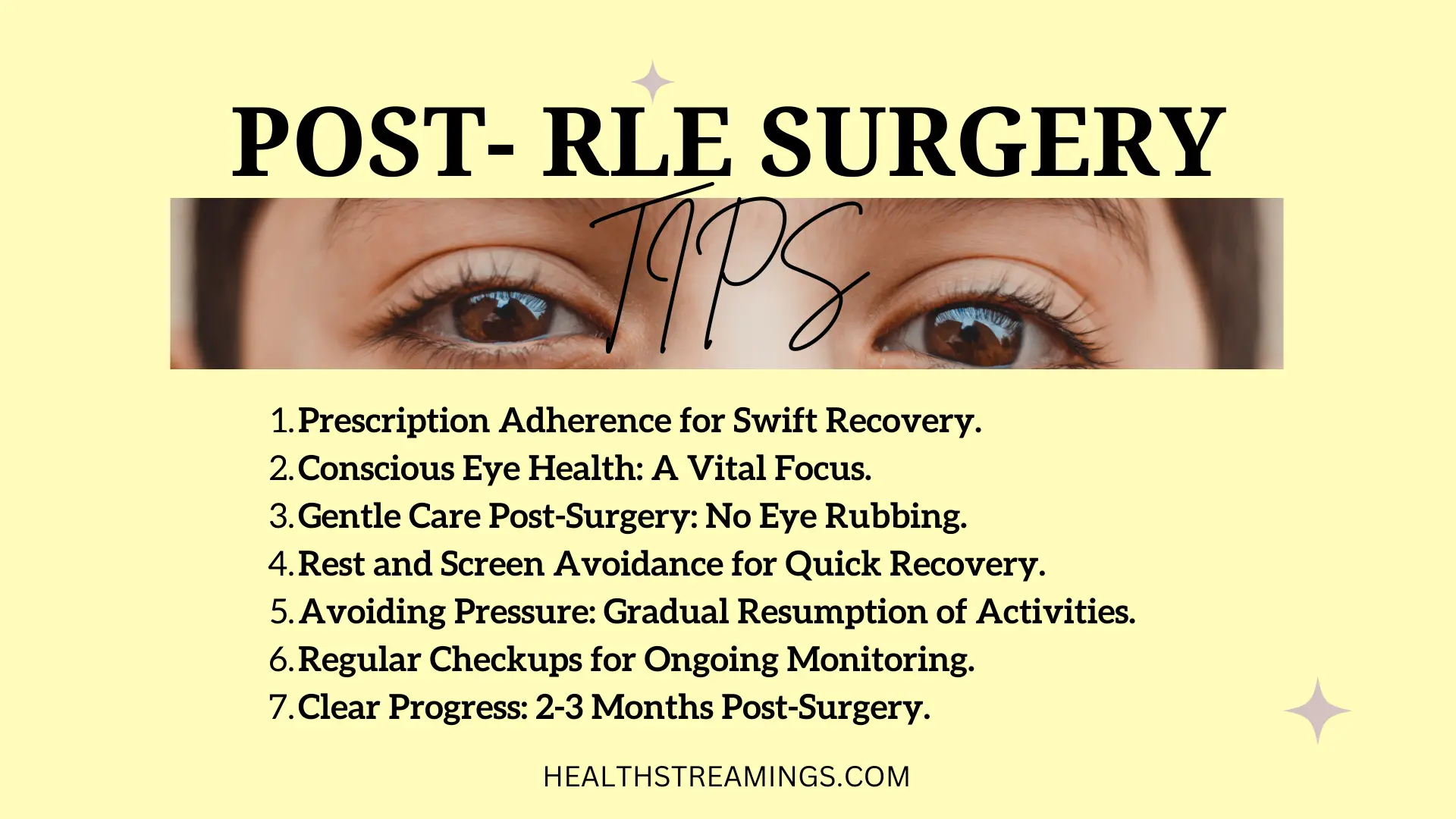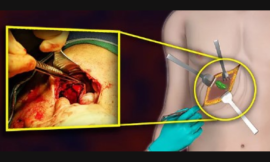Most eye surgeons say you shouldn’t be concerned about vision problems if you’re considering refractive lens exchange surgery. The CDC estimates that 12 million Americans, or roughly twice Arizona’s population, suffer from vision problems. This is a staggering statistic.
You can achieve extraordinary results if you are eligible for refractive lens exchange eye surgery, even if you are over 40 and struggling to get rid of reading glasses and traditional contact lenses.
You may wonder how you can qualify for RLE, what to expect during and after RLE surgery, and what type of refractive lens can treat specific eye conditions (myopia, hyperopia, astigmatism).
Let’s learn about this RLE eye surgery and make informed, healthy decisions for acquiring clear and sharp vision.
What is Refractive Lens Exchange (RLE) Surgery? Explain
In elderly patients who are not eligible for laser-assisted surgical procedures, RLE eye surgery with microincisions is an effective way to treat presbyopia.
In addition to treating presbyopia, optical centres also treat nearsightedness and farsightedness by substituting biocompatible (manufactured in a lab) lenses, such as Toric, for natural lenses.
Compared to traditional contact lenses, RLE surgery has the potential. It is becoming more and more popular because it helps treat cataract conditions with little to no infection rate.
For RLE eye surgery, who is a good candidate?
Depending on the doctor’s prescription, who will check your age, optical lab reports, eye health, and other important factors, you may be a good candidate for RLE. The following list includes some typical characteristics that will make you a good candidate for refractive lens exchange surgery:
- Ought to be older than 40.
- Experiencing issues with both near and far vision.
- Not suffering from glaucoma or other autoimmune conditions.
- Presbyopia is an age-related visual impairment.
In old age, the patient’s immune system is not strong enough to heal correctly, and there is a risk of retinal detachment and dysfunctional lens syndrome. As a result, it is preferable to have RLE surgery rather than LASIK at a later age to ensure complete satisfaction.
In a case study, RLE surgery was performed on 28 patients aged 45 to 50. Seven were pretreated with LASIK, which eliminates cataracts following RLE eye surgery.
What differentiates Refractive Lens Exchange from LASIK?
There are different factors by which you can differentiate the traditional LASIK from the refractive lens exchange. If you are looking in terms of procedure, then LASIK involves the formation of a corneal flap. In contrast, the RLE proceeds with the replacement of a natural lens with a biocompatible lens.
In terms of financial means, the cost of the refractive lens exchange procedure varies, depending on the type of lens used. Toric lens cost ranges between 3000-6000$. Whereas the LASIK cost (range between 1500-2500$ per eye) does not fluctuate as this only involves the formation of a corneal flap and then the tissue removal to get clear and improved vision.
What to Expect from the Refractive Lens Exchange Approach
RLE, like any other surgical procedure, involves using anaesthetic drugs to keep the patient comfortable during the optical surgery. During this surgery, drops or pellets (such as Ativan) will be placed under the patient’s eye; the most effective way to fractionate the pupil is to allow the ophthalmologist to access the natural lens.
Your eye surgeon will make an incision in the sclera to remove the remaining natural lens fractions. The next step is to evacuate the lens capsule (the surgeon will examine all procedures under a microscope).
The most critical part of RLE surgery now begins: the placement of a biocompatible lens with various types of refractive error-correcting features in the thick membrane of the ocular lens. Ocular lubricants support this.
Below, we will discuss some clear lens exchange implant choices that an ophthalmologist can recommend based on the patient’s needs.
Accommodating lens
The biocompatible, accommodating refractive lens is not designed to focus on objects close to or far away. With myopia and hyperopia conditions, it has the edge to provide a clear vision of the objects at different distances. After this lens replacement procedure, you might occasionally need reading glasses.
Toric lens
Obtaining a Toric IOL is a highly recommended optical procedure for astigmatic conditions. Instead of being round, the cornea in this condition is now distorted into an oval shape. It treats astigmatism, which causes blurry vision as people age.
Monofocal lens and Multifocal lens

Your ophthalmologist may advise you to undergo monofocal IOL replacement surgery to achieve visual clearance at a specific distance that can be near or far. This kind of lens won’t wholly heal eye ailments.
A patient wearing a multifocal lens can see objects in the -25.0D to +25.0D range that are farsighted and nearsighted. It has advantages and disadvantages and can change depending on the patient’s health.
Suppose your surgeon uses phacoemulsification technology during the RLE surgery. In that case, the microincision technique will improve your chances of receiving vision correction.
What is the Success Rate of RLE Eye Surgery?
The satisfaction level of the patients will describe how successful RLE is. A rough estimate is that 95% of patients got satisfactory results from their refractive lens surgery and enjoyed improved vision.
It provides visual freedom more significantly from eye conditions, including presbyopia and astigmatism.
Pros and Cons Associated with Refractive Lens Replacement
Before deciding whether to undergo RLE surgery, weighing the pros and cons is best. Let’s discuss what’s worth considering.
Pros:

- It provides vision freedom.
- It can treat all eye conditions (refractive error).
- Patients will be on the road to recovery as there is no chance of suffering from cataract conditions in old age.
- Suitable for healthy cornea patients to get improved vision.
Cons:
- A primary disadvantage of RLE for older people is that there is a higher chance of retinal detachment after the surgery.
- Following the above, the second downside of this surgery is temporary or permanent vision loss.
- In some cases, an additional optical procedure would be considered to improve the eye condition and avoid complications.
- A lens capsule is a thin membrane of the eye organ that will break during the surgery, with a 1.5% chance.
RLE Post-Surgery Tips
Your eye surgeon will prescribe some medicines you must take for some time to heal your cornea faster. You would have to be conscious about eye health as it is the most crucial part of the body.
If you follow your ophthalmologist’s prescriptions, you will be on the mend for recovery. Don’t rub your eyes just after the surgery to soothe your discomfort. Taking a nap and avoiding the screen can help swiftly recover eye condition.
Avoid intense activities that exert pressure and involve the eyes. You can be back in the saddle after 3-5 days. A weekly checkup would be necessary if you are experiencing itching, irritation, reddish eyes, and retinal detachment. You will be in the clear within 2-3 months after the refractive lens exchange eye surgery.

Does Health Insurance Cover RLE Eye Surgery?
To reduce healthcare costs, you’ll need insurance, which can be commercial or private. Most people need to be made aware of their healthcare insurance coverage. Keep in mind that most insurance companies do not cover RLE eye surgery.
Some private health insurance plans cover some optical expenses but only part of the surgery cost. If you want refractive lens replacement or exchange eye surgery, you can get discounts and a payment plan from visual centres.
If you are concerned about the cost of RLE surgery, you can look into HSA and FSA funds to help with the financial aspect. Request a brief payment plan if you can only pay some at a time.
How will RLE affect you in the Future?
RLE replaces the natural lens with a thinner synthetic lens. The natural lens expands with age, impeding the flow of vitreous humor in the surrounding area. It will cause glaucoma disorder.
It will not give you immunity or the strength to withstand any upcoming disorder. This biocompatible lens will not expand or block the side area of the lens, which can lead to severe vision issues.
Both implantable Collamer ICLs and intraocular lens IOLs effectively treat myopia, hyperopia, presbyopia, and astigmatism. A patient can eliminate the need for reading glasses and the associated monthly or annual costs.
The bottom line
In summary, RLE is an efficient refractive procedure for treating various eye conditions in patients not candidates for LASIK or PRK. To improve visual strength, your crystalline lens will be replaced with a lab-made lens with no drawbacks.
The type of refractive error, the patient’s visual needs, and the surgeon performing the surgery all affect the cost. Following surgery, patients may experience dry or blurry eyes. With time and healing, the patient’s blurry vision will become clear.
Frequently Asked Questions
What is the best lens for RLE?
A multifocal lens is often recommended, as it can focus on objects at varying distances. The best lens for RLE depends on the eye condition and the visual outcome that a patient expects.
What is the recovery time for RLE surgery?
The complete recovery time for RLE surgery is about 2-3 months. A patient can recover earlier following the eye doctor’s prescriptions.
What are the downsides of refractive lens exchange?
The downsides of refractive lens exchange surgery include dry eyes, itching, lens capsule rupture, and vision loss.
What is the average cost of RLE surgery?
The average cost of the lens for RLE surgery is between $3,000 and $6,000. The cost may be higher if the patient has extreme myopia and astigmatism.
References:
- Salerno, L. C., et, al. (2017). Multifocal intraocular lenses: Types, outcomes, complications and how to solve them. Taiwan Journal of Ophthalmology, 7(4), 179.
- Alió, J. L., et, al. (2014). Refractive lens exchange in modern practice: when and when not to do it? Eye And Vision, 1(1).
- 2020–2021 BCSC Basic and Clinical Science CourseTM. (n.d.).
- Fast Facts of Common Eye Disorders | CDC. (n.d.).
- Hoffman, R. S., et al. (2004). Refractive lens exchange as a refractive surgery modality. Current Opinion in Ophthalmology, 15(1), 22–28.




